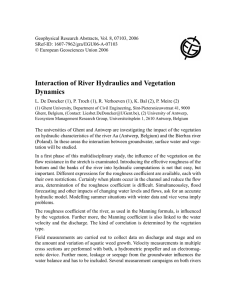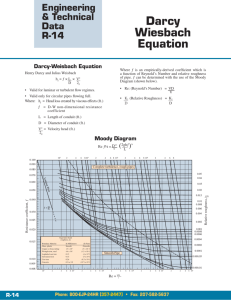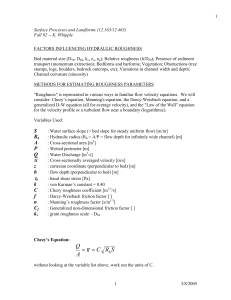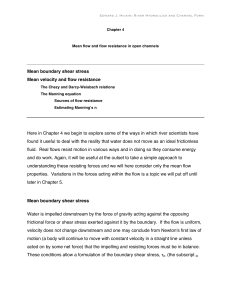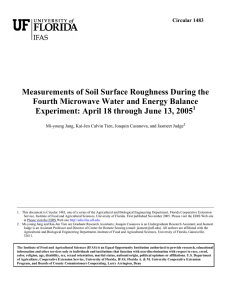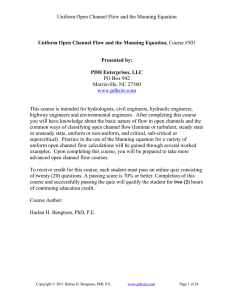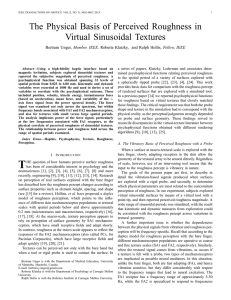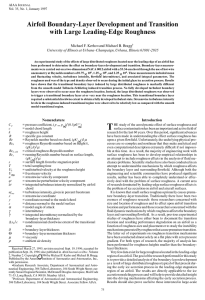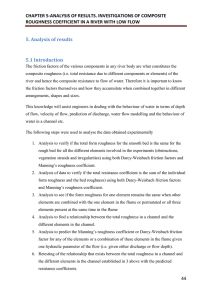PROBLEM SET 7 - SOLUTIONS Comments on Problem Set 7
advertisement
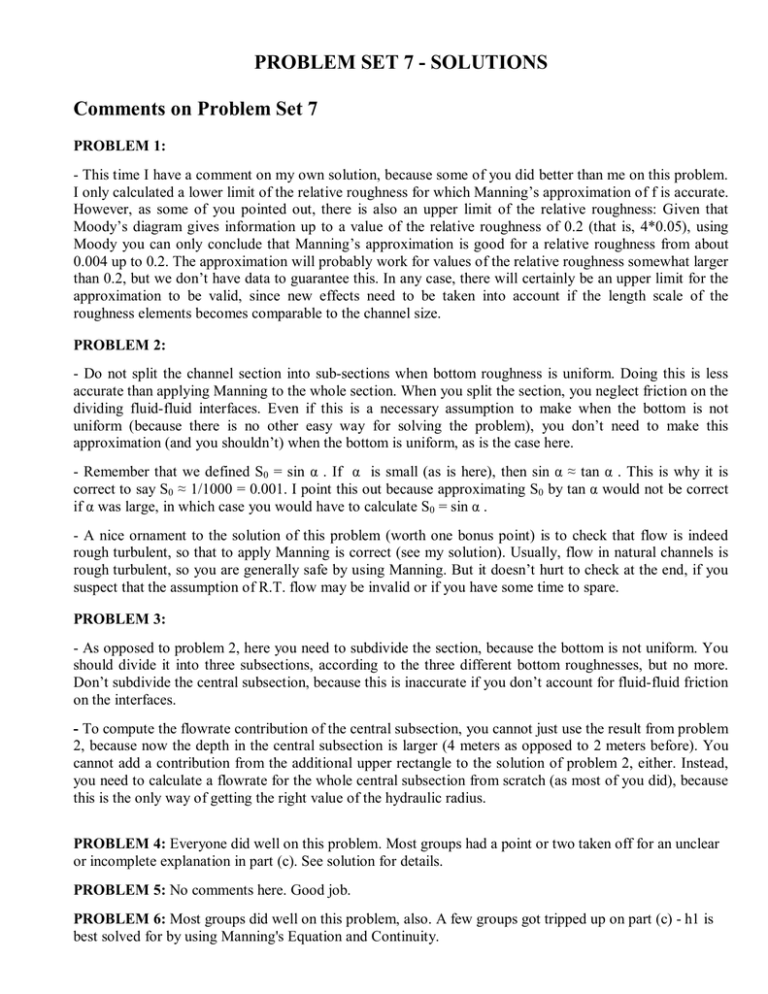
PROBLEM SET 7 - SOLUTIONS Comments on Problem Set 7 PROBLEM 1: - This time I have a comment on my own solution, because some of you did better than me on this problem. I only calculated a lower limit of the relative roughness for which Manning’s approximation of f is accurate. However, as some of you pointed out, there is also an upper limit of the relative roughness: Given that Moody’s diagram gives information up to a value of the relative roughness of 0.2 (that is, 4*0.05), using Moody you can only conclude that Manning’s approximation is good for a relative roughness from about 0.004 up to 0.2. The approximation will probably work for values of the relative roughness somewhat larger than 0.2, but we don’t have data to guarantee this. In any case, there will certainly be an upper limit for the approximation to be valid, since new effects need to be taken into account if the length scale of the roughness elements becomes comparable to the channel size. PROBLEM 2: - Do not split the channel section into sub-sections when bottom roughness is uniform. Doing this is less accurate than applying Manning to the whole section. When you split the section, you neglect friction on the dividing fluid-fluid interfaces. Even if this is a necessary assumption to make when the bottom is not uniform (because there is no other easy way for solving the problem), you don’t need to make this approximation (and you shouldn’t) when the bottom is uniform, as is the case here. - Remember that we defined S0 = sin α . If α is small (as is here), then sin α ≈ tan α . This is why it is correct to say S0 ≈ 1/1000 = 0.001. I point this out because approximating S0 by tan α would not be correct if α was large, in which case you would have to calculate S0 = sin α . - A nice ornament to the solution of this problem (worth one bonus point) is to check that flow is indeed rough turbulent, so that to apply Manning is correct (see my solution). Usually, flow in natural channels is rough turbulent, so you are generally safe by using Manning. But it doesn’t hurt to check at the end, if you suspect that the assumption of R.T. flow may be invalid or if you have some time to spare. PROBLEM 3: - As opposed to problem 2, here you need to subdivide the section, because the bottom is not uniform. You should divide it into three subsections, according to the three different bottom roughnesses, but no more. Don’t subdivide the central subsection, because this is inaccurate if you don’t account for fluid-fluid friction on the interfaces. - To compute the flowrate contribution of the central subsection, you cannot just use the result from problem 2, because now the depth in the central subsection is larger (4 meters as opposed to 2 meters before). You cannot add a contribution from the additional upper rectangle to the solution of problem 2, either. Instead, you need to calculate a flowrate for the whole central subsection from scratch (as most of you did), because this is the only way of getting the right value of the hydraulic radius. PROBLEM 4: Everyone did well on this problem. Most groups had a point or two taken off for an unclear or incomplete explanation in part (c). See solution for details. PROBLEM 5: No comments here. Good job. PROBLEM 6: Most groups did well on this problem, also. A few groups got tripped up on part (c) - h1 is best solved for by using Manning's Equation and Continuity.


